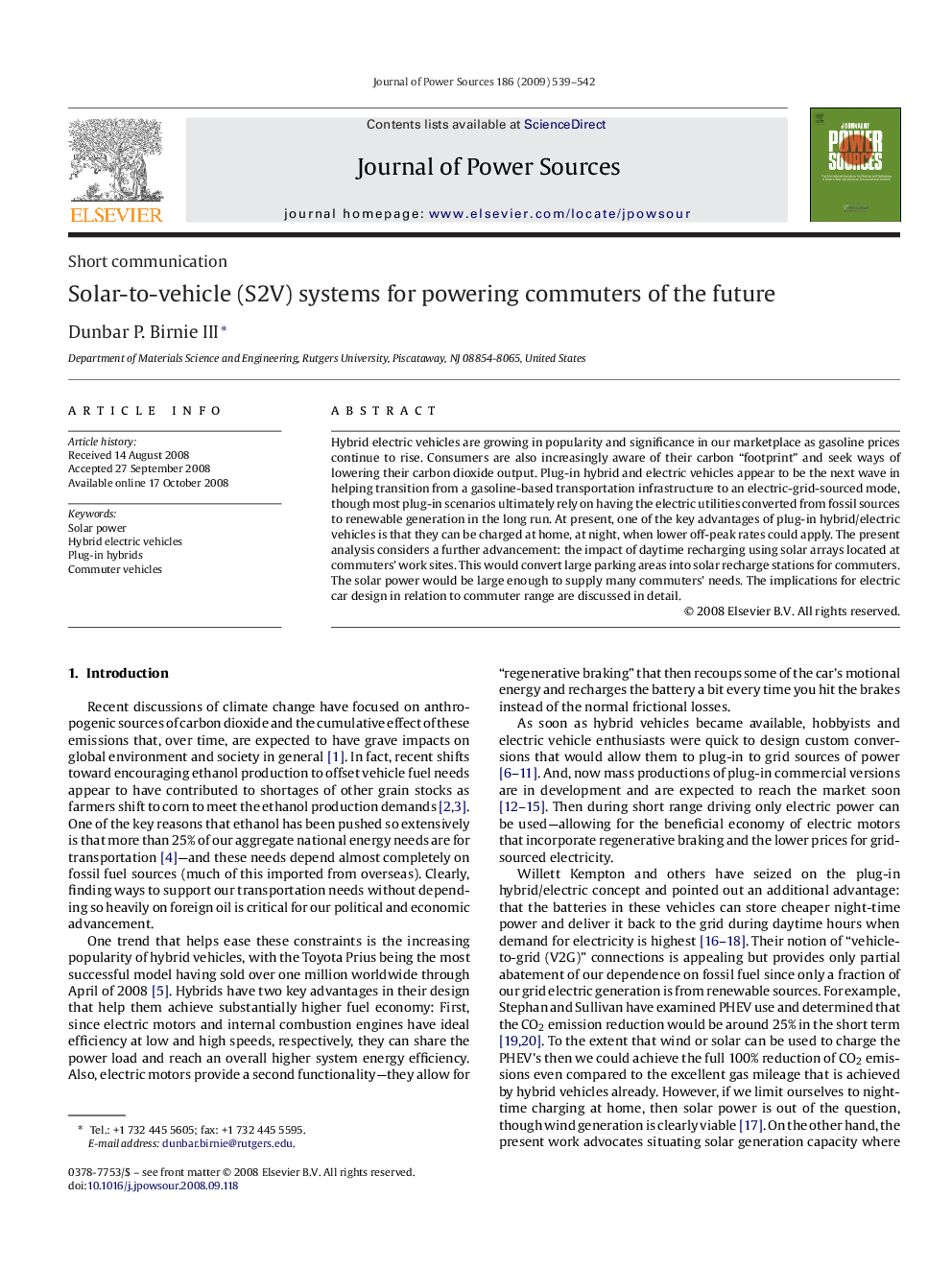| Article ID | Journal | Published Year | Pages | File Type |
|---|---|---|---|---|
| 1291346 | Journal of Power Sources | 2009 | 4 Pages |
Hybrid electric vehicles are growing in popularity and significance in our marketplace as gasoline prices continue to rise. Consumers are also increasingly aware of their carbon “footprint” and seek ways of lowering their carbon dioxide output. Plug-in hybrid and electric vehicles appear to be the next wave in helping transition from a gasoline-based transportation infrastructure to an electric-grid-sourced mode, though most plug-in scenarios ultimately rely on having the electric utilities converted from fossil sources to renewable generation in the long run. At present, one of the key advantages of plug-in hybrid/electric vehicles is that they can be charged at home, at night, when lower off-peak rates could apply. The present analysis considers a further advancement: the impact of daytime recharging using solar arrays located at commuters’ work sites. This would convert large parking areas into solar recharge stations for commuters. The solar power would be large enough to supply many commuters’ needs. The implications for electric car design in relation to commuter range are discussed in detail.
